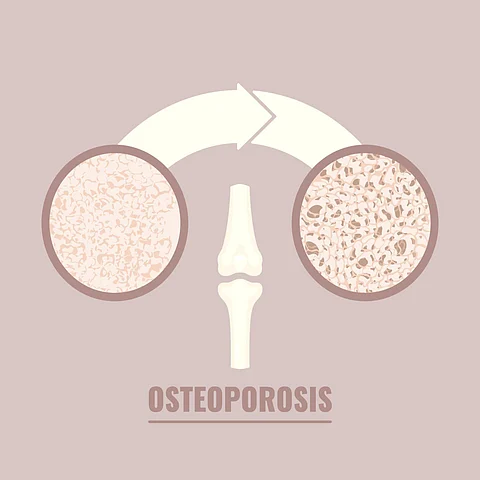It's a familiar complaint: Men receive better medical care than women. Research has shown, for instance, that male heart attack victims are given more aggressive therapy than female heart attack patients. The problem has been blamed on bias -- doctors tend to think of heart attacks as a predominantly male problem. But a new study suggests that men may also be undertreated for conditions associated primarily with women.
Ten million Americans have osteoporosis, a disease that causes bones to become brittle and weak. About 20 percent of all sufferers are male, according to the National Osteoporosis Foundation. A report published in the Archives of Internal Medicine found that many American men with osteoporosis weren't receiving the care they need.
Different rates of treatment
Doctors at St. Luke's Episcopal Hospital in Houston followed 363 patients who had suffered non-traumatic hip fractures. Roughly one-third were male, and the average age of the patients was about 80. Most of the men and women broke their hips in falls, suggesting that their bones were quite fragile. Given their age and the nature of their injuries, most experts would agree that these patients should have been considered prime candidates for a diagnosis of osteoporosis. Yet, upon being discharged from the hospital, only five out of 110 male patients -- 4.5 percent -- were being treated for osteoporosis, contrasted with 27 percent of the women.
The Houston researchers, led by bone physiologist Gary Kiebzak, periodically checked up on the patients for five years. The percentage of men who were put on some form of bone-health regimen (usually vitamin supplements) eventually rose to 27 percent. But the comparable figure for women was much higher -- 71 percent. Women also were twice as likely as the men to receive more aggressive treatments, such as prescription drugs for osteoporosis and bone-density tests. In the Houston study, 32 percent of the male patients died with a year of being discharged, compared to 17 percent of the women.
Why did the men get such spotty care? Kiebzak believe it's because male osteoporosis "isn't on everybody's radar screen." While orthopedists fix more severe broken bones, long-term treatment of patients who suffer fractures is more likely to be handled by primary-care doctors.
Kiebzak can only speculate about why the male patients he studied were so unlikely to be diagnosed with osteoporosis, but he suspects it's because many primary-care physicians still associate weak bones with women. That's a view reinforced by news stories about osteoporosis and product advertising.
No uniform guidelines for men
Dr. Eric Orwoll of the Oregon Health and Science University points out that doctors lack uniform guidelines for diagnosing and treating osteoporosis in men. Recent developments may help as more organizations address male osteoporosis.
The gold standard for diagnosing osteoporosis is a special form of x-ray that measures bone density. The International Society for Clinical Densitometry has established guidelines to help physicians decide when male and female patients should undergo bone-density testing. Men who have broken bones from low-impact forces, such as falling down (so-called "fragility fractures"), should be tested, according to the society's guidelines. So should men with clinical risk factors for a fracture, and men with a disease or condition associated with low bone mass.
The society recommends bone-density testing for all men 70 and older, as does the National Osteoporosis Foundation -- though Orwoll says there's little data to suggest such a sweeping measure would be cost-effective.
The National Osteoporosis Foundation recommends initiating treatment not just for men whose bone density confirms osteoporosis, but also for men age 50 and older with clinical risk factors for a fracture.
References
America's bone health: the state of osteoporosis and low bone mass. National Osteoporosis Foundation. http://www.nof.org/advocacy/prevalence/index.htm
Kiebzak GM, et al. Undertreatment of osteoporosis in men with hip fracture. Archives of Internal Medicine. October 2002. 162(19):2217-22
Interview with Gary Kiebzak, PhD, bone physiologist
Interview with Eric Orwoll, MD, Oregon Health and Science University
Official positions. International Society for Clinical Densitometry. http://www.iscd.org/Visitors/official.cfm
International Society for Clinical Densitometry. Official Positions. http://www.iscd.org/Visitors/positions/OfficialPositionsText.cfm
International Society for Clinical Densitometry. Patient Information. http://www.iscd.org/Visitors/patient/index.cfm#whodensity
National Osteoporosis Foundation. Guidelines.


